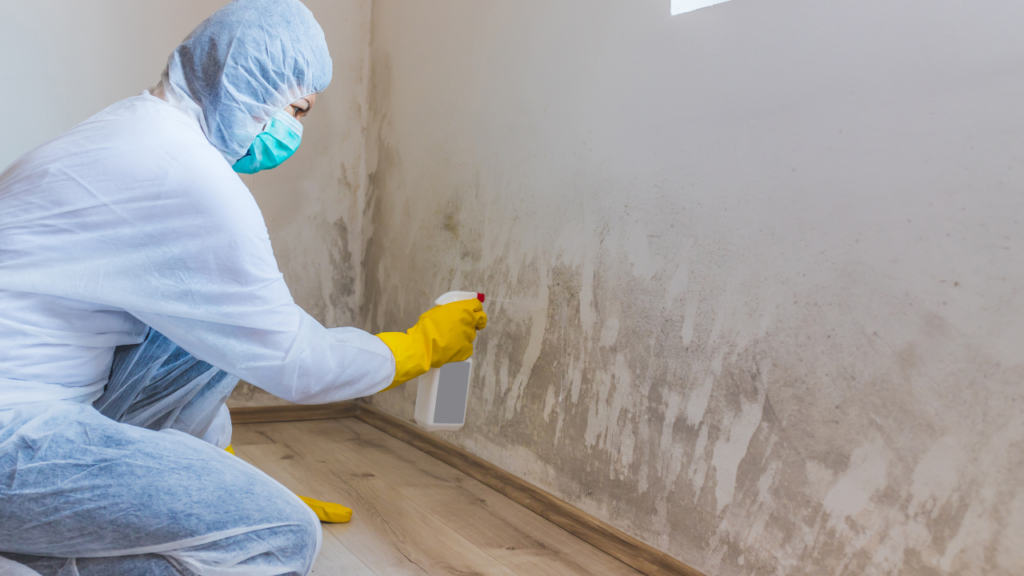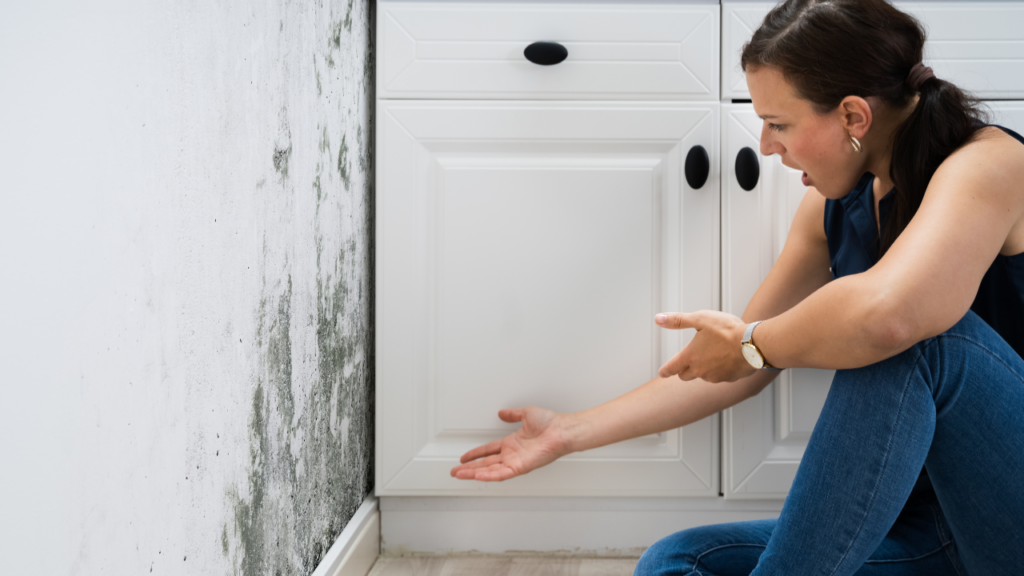
Being exposed to damp and moldy conditions in homes and workplaces can have harmful health effects. Mold and Mycotoxins, a type of fungus, can thrive in indoor and outdoor environments with high moisture levels. Mold infection occurs when mold spores enter the body and begin to grow. Exposure to mold can occur through inhalation of spores or direct contact with mold-contaminated surfaces.
Individuals with weakened immune systems or high-stress levels, which can compromise their immune response, are at a higher risk of developing mold infections. Toxic mold has the ability to produce toxic substances called mycotoxins, which can be harmful when ingested, inhaled, or absorbed through the skin.
Mycotoxin exposures can occur through two main routes: direct consumption of contaminated food and indirect exposure through animals that consume contaminated feed. One specific example of indirect exposure is through milk consumption. For an inside look into Naturopathic Treatment, Mold Prevention, and the potential risks, join the Confident Hormone Club today and empower yourself with knowledge!
Mycotoxins symptoms
- Nausea
- Gastrointestinal disturbances
- Vomiting
How does Mold grow?
For its survival, mold necessitates three key elements: a source of nourishment, warmth, and moisture. It can find sustenance in various materials commonly found in water damaged buildings, such as wood, carpet, ceiling tiles, drywall, upholstery, wallpaper, and sheetrock. Warmth and moisture are abundantly available, particularly in humid climates. They affect indoor environments and cause inflammatory bowel diseases.
What are the Risks of Mold Exposure?
Mold toxicity can have different effects on our health. It can be toxigenic, causing chemical poisoning. The reported cases of health issues resulting from mold exposure are likely underestimated, as there is limited awareness among health agencies regarding the potential connection. Furthermore, the complexity of assessing the combined impact of pollutants from various environmental sources.
The sight of mold growth indoors should raise concern for anyone. It’s important to note that both living and dead mold can pose risks. Alongside the potential health consequences linked to indoor mold growth, it’s worth mentioning that it can also lead to expensive structural damage.
The lack of recognition of the link between mold and human diseases may contribute to an underestimation of the actual occurrence of illnesses caused by mold.
- A study conducted in six states of the United States involving 6,000 children revealed a significant correlation between home dampness and increased risk of respiratory and other illnesses.
Reference: Kuhn, D. M., & Ghannoum, M. A. (2003). “Indoor Mold, Toxigenic Fungi, and Stachybotrys chartarum: Infectious Disease Perspective (https://journals.asm.org/doi/full/10.1128/cmr.16.1.144-172.2003)
- It can also be pathogenic, leading to triggering hypersensitive immune responses (such as MCAS, SIBO, and Autoimmune disease).
- When there is a significant accumulation of mold spores and other substances released by these organisms, it can lead to the development of allergies, asthma attacks, infections, and a variety of respiratory, neurological, and skin issues..
- Inhaling or coming into contact with mold can also irritate the eyes, skin, throat, and lungs or lead to hypersensitivity pneumonitis.
- Certain molds that produce mycotoxins, which are potentially toxic substances, can cause symptoms such as liver cancer, toxicosis, infant pulmonary (lung) hemorrhage, and kidney disease.
How much mold is too much?

In residences where water damage and fungal growth are apparent, a combination of different types of fungi can coexist. It is widely recognized that health issues tend to arise consistently when the average concentration of airborne spores exceeds 2,000 colony-forming units per cubic meter (CFU/m3).
This specific group comprises fewer than 20 percent of the total population and encompasses individuals such as infants, the elderly, pregnant women, and those with weakened immune systems. Factors contributing to their diminished immunity can stem from medical procedures like organ transplants, prior ailments such as cancer or liver disease, and pre-existing respiratory conditions.
Molds that are frequently encountered have the potential to cause severe and invasive infections in individuals with compromised immune systems. In high-risk groups, the infection rates can reach as high as 25 percent, and the outcome can be fatal within a matter of days to weeks.
Mold Risk for Children
Children residing in houses with dampness and/or mold growth face an elevated risk of experiencing recurring or ongoing upper respiratory symptoms. These symptoms may include
- Rhinitis
- Nasal congestion
- Skin rashes
- Sneezing
- Eye irritation
- Hoarseness
- As well as lower respiratory tract issues
- Dry or productive cough
- Wheezing
Additionally, other symptoms that may arise include skin redness and itching, headaches, fever, excessive fatigue, joint pains, ear infections, and nosebleeds.
Measures for Mold Growth Prevention and Cleanup
General clean-up procedures entail identifying and eliminating the source of moisture, cleaning, disinfecting, drying the affected area, and appropriately disposing of materials with mold residues.
Using specialized filters can assist in removing fungal spores from the air, while various disinfectants, including a 2.4 percent bleach solution, effectively deactivate mold spores on non-porous surfaces.
Unless the moisture source is eliminated, and affected areas are thoroughly cleaned and disinfected, the recurrence of mold growth is likely. Swift cleanup (within 24-48 hours) of water-damaged homes can help minimize the growth and spread of fungal contaminants, as can regular maintenance cleaning.
Note: It is crucial to adhere to the principle that indoor fungal growth should not be tolerated, and prompt removal and decontamination measures need to be implemented upon detecting any signs of infestation.
How much mold can affect your health?
Different types of mold, such as Stachybotrys, Penicillium, and Aspergillus, are capable of producing mycotoxins. The symptoms of mold exposure can vary depending on the type and quantity of mycotoxins present, but they may include fatigue, headaches, nausea, dizziness, and muscle weakness. Prolonged exposure to these toxins has been linked to neurological issues, disruptions in the immune system, and even cancer.
The effects of mold and mycotoxins extend throughout the body. Inhalation of mold spores can irritate the respiratory system, leading to coughing, wheezing, and respiratory distress. Mycotoxin exposure can have systemic repercussions, impacting multiple organ systems and interfering with DNA, immune function, and cellular metabolism.
Prolonged exposure to mycotoxins has been linked to chronic health conditions, including autoimmune diseases, neurological disorders, and cancer. Common symptoms of mold infection or mycotoxicity encompass chronic sinusitis, coughing, vision changes, post-nasal drip, constipation, headaches, food sensitivities, irritable bowel syndrome, chronic fatigue, skin reactions, rashes, and a persistent feeling of unwellness.
What is the Timeframe for Mold Growth?
Mold can start to grow within 24 to 48 hours of moisture being introduced into the air. Nevertheless, the visible manifestations of mold might not become apparent until several days or even weeks later. Hence, it is crucial to promptly dry your home and address any water damage following a leak or flood.
The autonomic nervous system is largely affected by mold and mycotoxins, which regulates involuntary functions such as heart rate, breathing, and digestion.
Short-term memory loss and challenges maintaining balance can occur with some cases of myotoxicity, including wheezing, a runny nose, and inflamed sinuses.
A Holistic Naturopathic Approach to Mold and Mycotoxin Treatment
A naturopathic approach to mold and mycotoxin treatment involves comprehensive testing for mold and addressing the foundations of digestive health. This approach incorporates the use of natural antifungal agents and supportive therapies to effectively eradicate mold in a gentle yet long-lasting manner. Dr. Kaylee Alton, ND, has received advanced training in the root cause of mold and mycotoxicity treatment through her work.
Feel free to avail yourself of the opportunity to visit our dedicated practitioners, who are enthusiastic about offering mold testing services and a wide range of treatment suggestions. Our tailored mold treatments and natural therapies aim to assist you in reclaiming your quality of life and enhancing your overall well-being for a long and fulfilling existence.
These include botanical medicines, herbal remedies, supplement recommendations, pain management techniques, clinical nutrition advice, lifestyle counseling, stress management techniques, and more.
Empowering Wellness Across a Spectrum of Health Conditions
Our holistic remedies can be utilized to address a diverse array of health conditions encompassing digestive ailments (such as irritable bowel syndrome), abdominal pain, SIBO, Gut health, blood sugar irregularities, autoimmune disorders, nutrient deficiencies, persistent pain, skin rashes, stress, adrenal fatigue, hair loss, or thinning, fluctuations in weight, blood pressure issues, hormone imbalances, and various other health concerns and chronic conditions.

